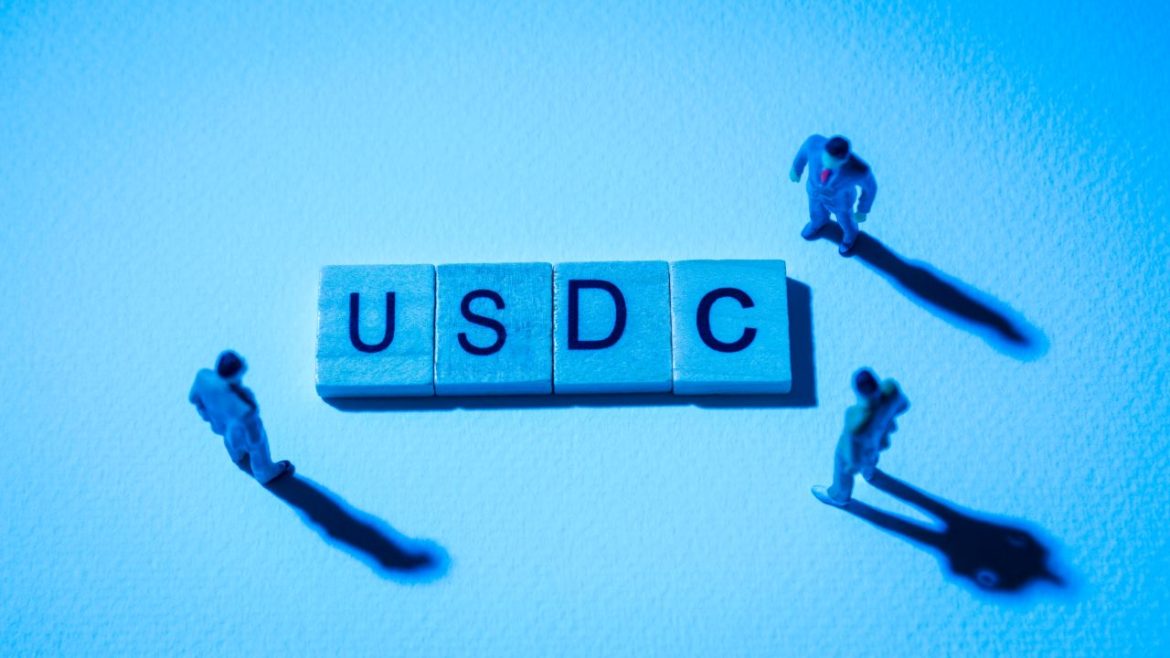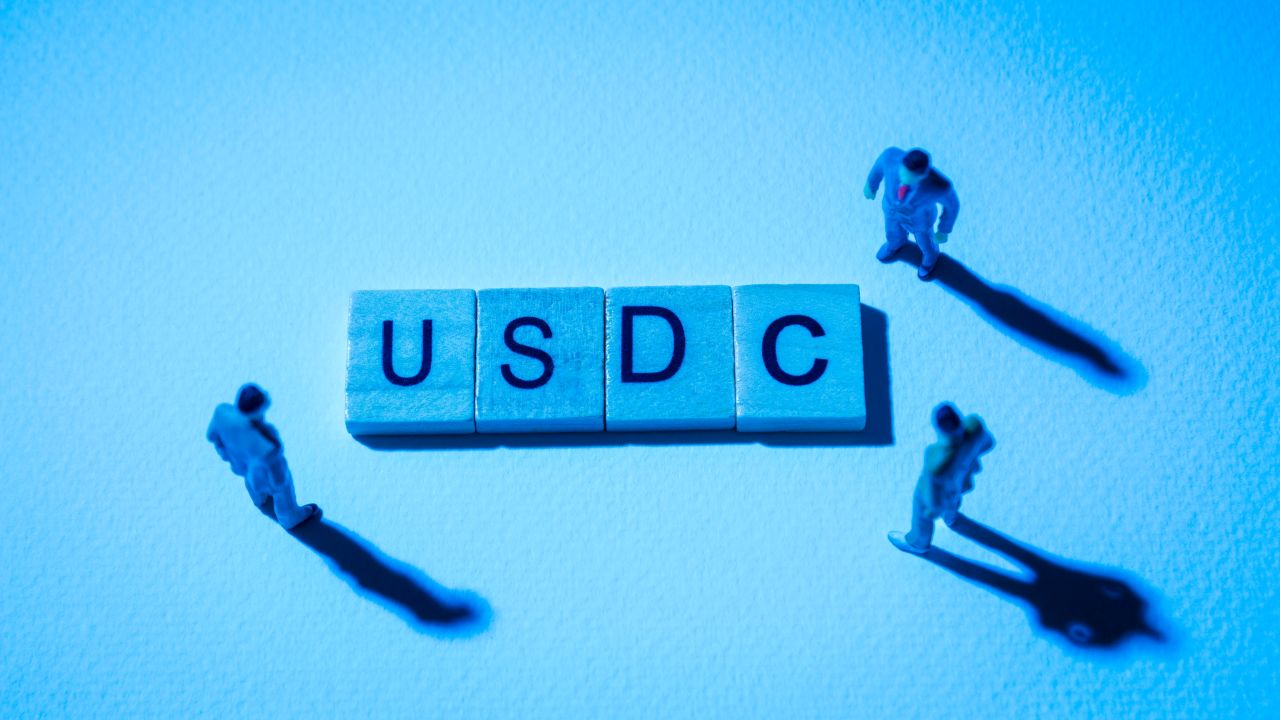The Rise of USDC: A New Era for US Banking
Introduction
The financial landscape is undergoing a seismic shift, and at the heart of this transformation is the integration of Circle’s USDC stablecoin into the US banking system. This development, driven by a strategic partnership with financial technology leader FIS, marks a pivotal moment in the convergence of traditional finance and digital assets. The potential implications are vast, promising to reshape payment systems, enhance financial inclusion, and redefine the role of banks in the digital age.
The Synergy of FIS and Circle
FIS, a Fortune 500 company, is a titan in the financial technology sector, providing critical infrastructure for banks worldwide. Its Money Movement Hub is a cornerstone for payment processing and money transfer services, facilitating seamless transactions across the globe. Circle, the issuer of USDC, has carved out a niche as a leader in the stablecoin market, renowned for its transparency and regulatory compliance.
The collaboration between FIS and Circle is more than just a technological integration; it’s a bridge between the old and the new. FIS brings its extensive network and deep understanding of traditional banking, while Circle offers the innovative digital asset that can streamline and enhance existing processes. This partnership is poised to create a more integrated financial ecosystem, where the benefits of digital assets are accessible to a broader audience.
USDC: The Stablecoin Advantage
USDC’s stability is its greatest asset. Unlike volatile cryptocurrencies such as Bitcoin or Ethereum, USDC is pegged to the US dollar, maintaining a 1:1 value. This stability makes it an ideal choice for payments, remittances, and other financial transactions where price fluctuations are undesirable.
For banks, offering USDC presents several advantages. Firstly, it enables faster and cheaper money transfers, particularly for cross-border payments. Traditional international transfers can be slow and expensive, often involving multiple intermediaries and hefty fees. USDC transactions, on the other hand, can be processed quickly and efficiently, reducing costs and improving the customer experience.
Secondly, USDC can attract a new generation of tech-savvy customers who are increasingly interested in digital assets. By offering USDC services, banks can position themselves as innovative and forward-thinking, appealing to a wider demographic.
Lastly, the integration of USDC provides banks with a foothold in the rapidly growing digital asset market. As the regulatory landscape evolves and digital assets become more mainstream, banks that have already embraced USDC will be better positioned to capitalize on new opportunities.
The Money Movement Hub: A Gateway to Digital Asset Adoption
FIS’s Money Movement Hub serves as a central point for banks to access a variety of payment and money transfer services. By integrating USDC into this hub, FIS is providing banks with a plug-and-play solution for offering stablecoin transactions.
This integration is significant for several reasons. It eliminates the need for banks to build their own infrastructure for handling USDC, reducing the costs and complexity associated with adopting digital assets. It also provides banks with access to FIS’s real-time payment and fraud detection tools, ensuring that USDC transactions are secure and compliant.
Furthermore, the Money Movement Hub offers a scalable path for banks to adopt digital assets. As demand for USDC services grows, banks can easily scale their operations without making significant investments in new infrastructure.
Addressing Trust and Regulation
While the integration of USDC into the banking system holds immense potential, it also raises important questions about trust and regulation. Customers need to be confident that USDC is truly backed 1:1 by US dollars and that their funds are safe. Circle has taken steps to address these concerns by providing regular audits and maintaining transparency about its reserves.
Regulation is another critical consideration. The regulatory landscape for stablecoins is still evolving, and banks need to ensure compliance with all applicable laws and regulations. Regulators are actively working on developing a comprehensive framework for stablecoins, which will provide greater clarity and certainty for banks and other market participants.
Despite these challenges, the momentum behind stablecoin adoption is undeniable. As regulators provide greater clarity and as banks become more comfortable with the technology, we can expect to see even wider adoption of USDC and other stablecoins in the years to come.
FIUSD: Fiserv’s Stablecoin Play
FIS is not the only major player making moves in the stablecoin space. Fiserv, another prominent fintech company, is launching its own stablecoin, FIUSD. This move underscores the growing interest in stablecoins among traditional financial institutions.
FIUSD is designed to help banks offer digital payment options without the need to build entirely new systems. This approach aligns with the broader trend of integrating digital assets into existing financial infrastructure, making it easier for banks to adopt and offer these new technologies to their customers.
Challenges and Opportunities
The integration of USDC into the US banking system is a significant step forward for the crypto industry. However, challenges remain before stablecoins can achieve mainstream adoption.
One key challenge is education. Many people are still unfamiliar with stablecoins and how they work. Banks need to educate their customers about the benefits of USDC and how to use it safely and effectively.
Another challenge is interoperability. Different stablecoins operate on different blockchains, which can make it difficult to transfer funds between them. Efforts are underway to improve interoperability between different stablecoins and blockchain networks.
Despite these challenges, the opportunities are immense. As stablecoins become more widely adopted, they have the potential to transform the way we think about money and payments. They can enable faster, cheaper, and more efficient transactions, benefiting both consumers and businesses.
A Glimpse into the Future of Finance
The collaboration between FIS and Circle, along with Fiserv’s foray into stablecoins, signals a profound shift in the financial landscape. It represents a blurring of the lines between traditional finance and the digital asset world. As stablecoins become more integrated into the banking system, we can expect to see a more seamless and efficient flow of funds, both domestically and internationally.
This trend could also lead to greater financial inclusion, providing access to financial services for those who are currently underserved by the traditional banking system. Stablecoins can be used to send remittances to developing countries, providing a cheaper and more reliable alternative to traditional money transfer services.
Conclusion: A New Era for US Banking
The integration of USDC into the US banking system is a game-changer. It has the potential to revolutionize payments, improve financial inclusion, and pave the way for a more integrated and efficient financial ecosystem. While challenges remain, the momentum behind stablecoin adoption is undeniable, suggesting a future where digital assets play an increasingly important role in our daily lives. As banks embrace this new era, they stand to benefit from the transformative power of stablecoins, shaping a financial landscape that is faster, more inclusive, and more innovative than ever before.





